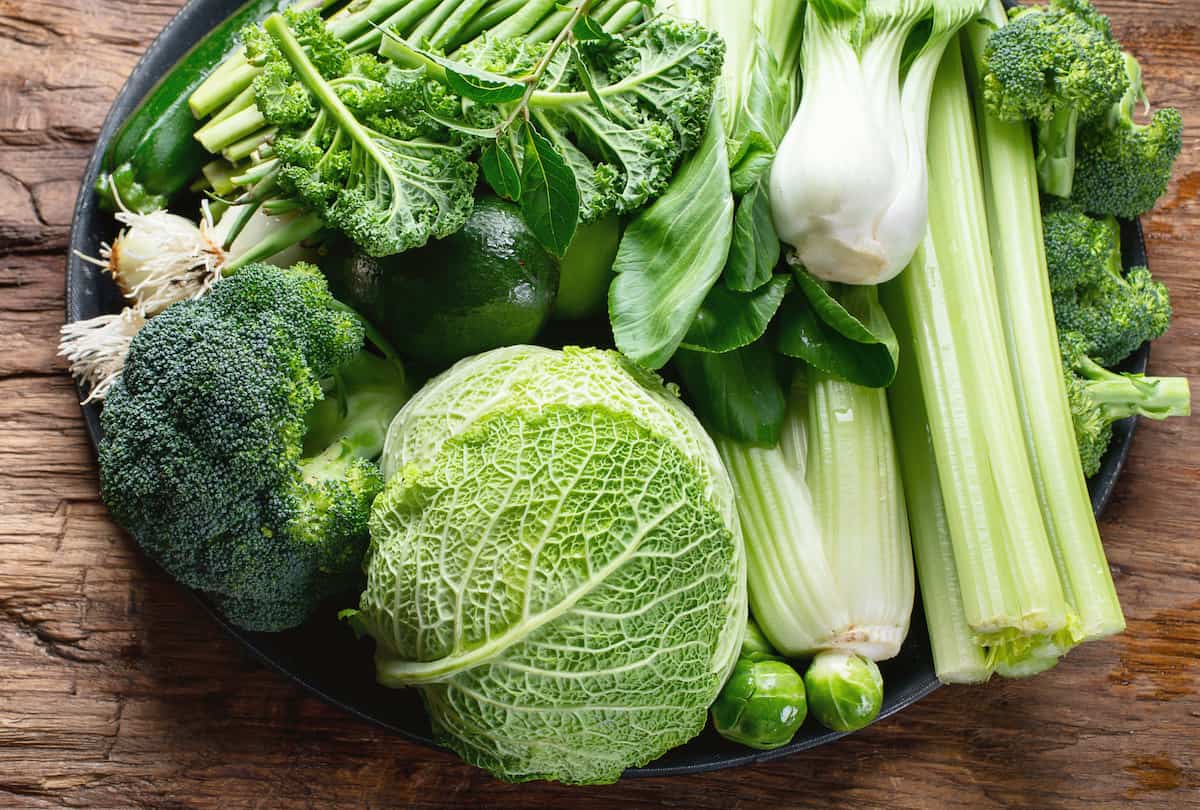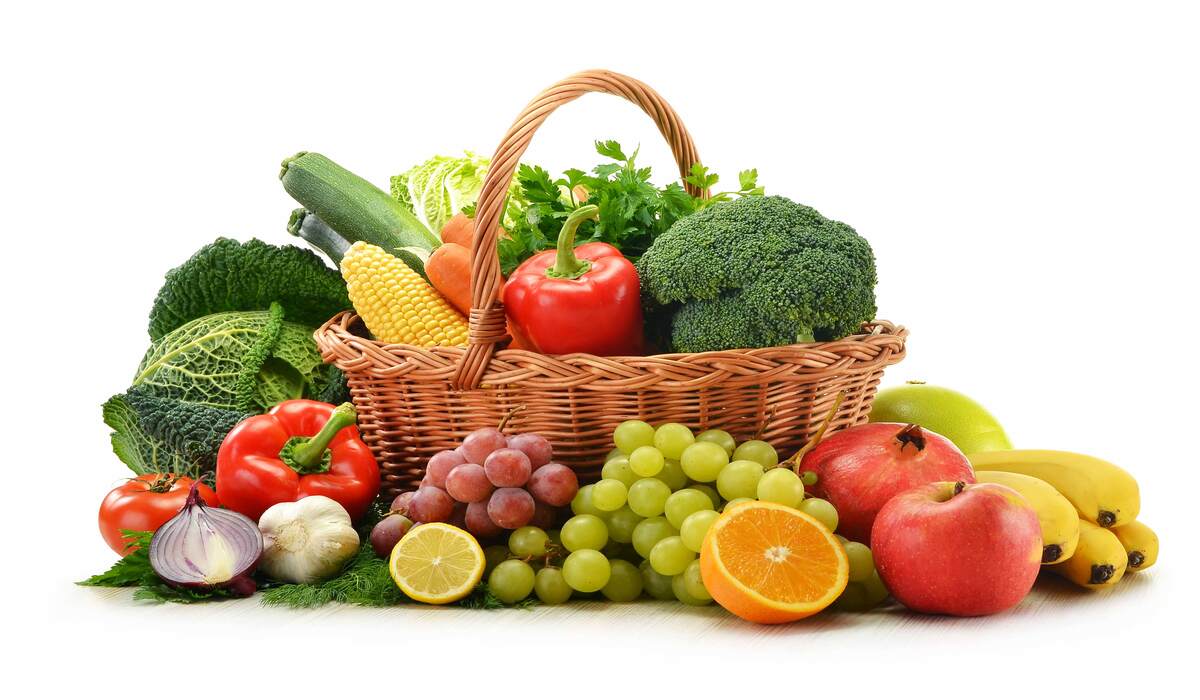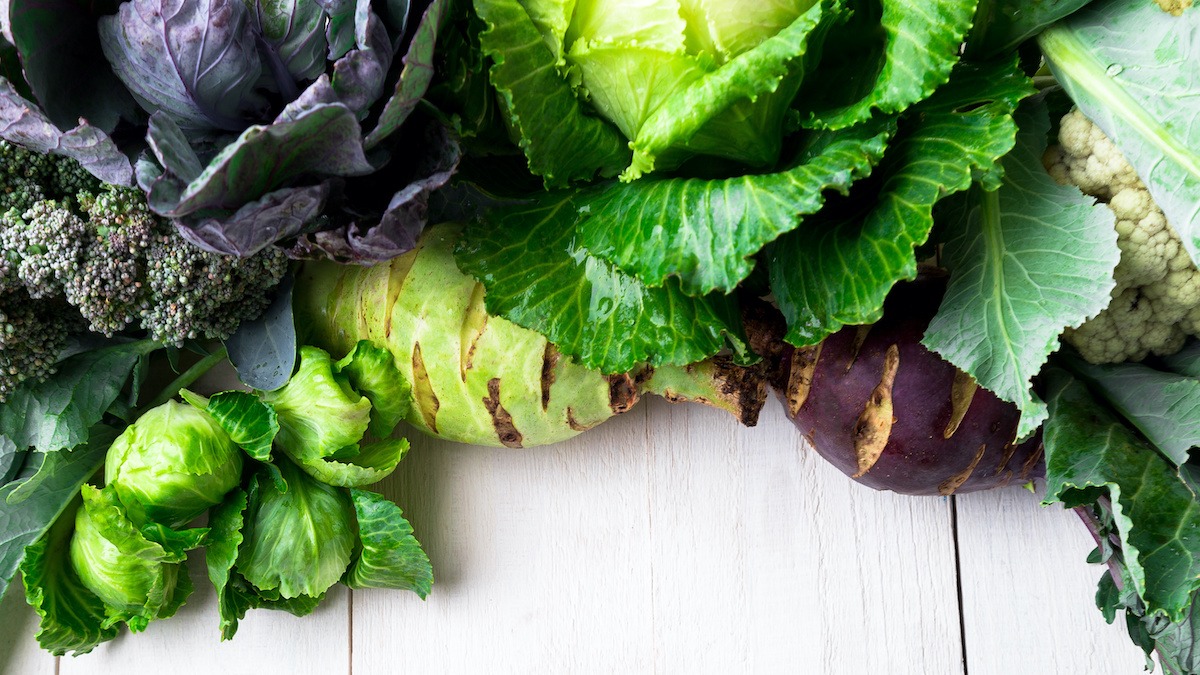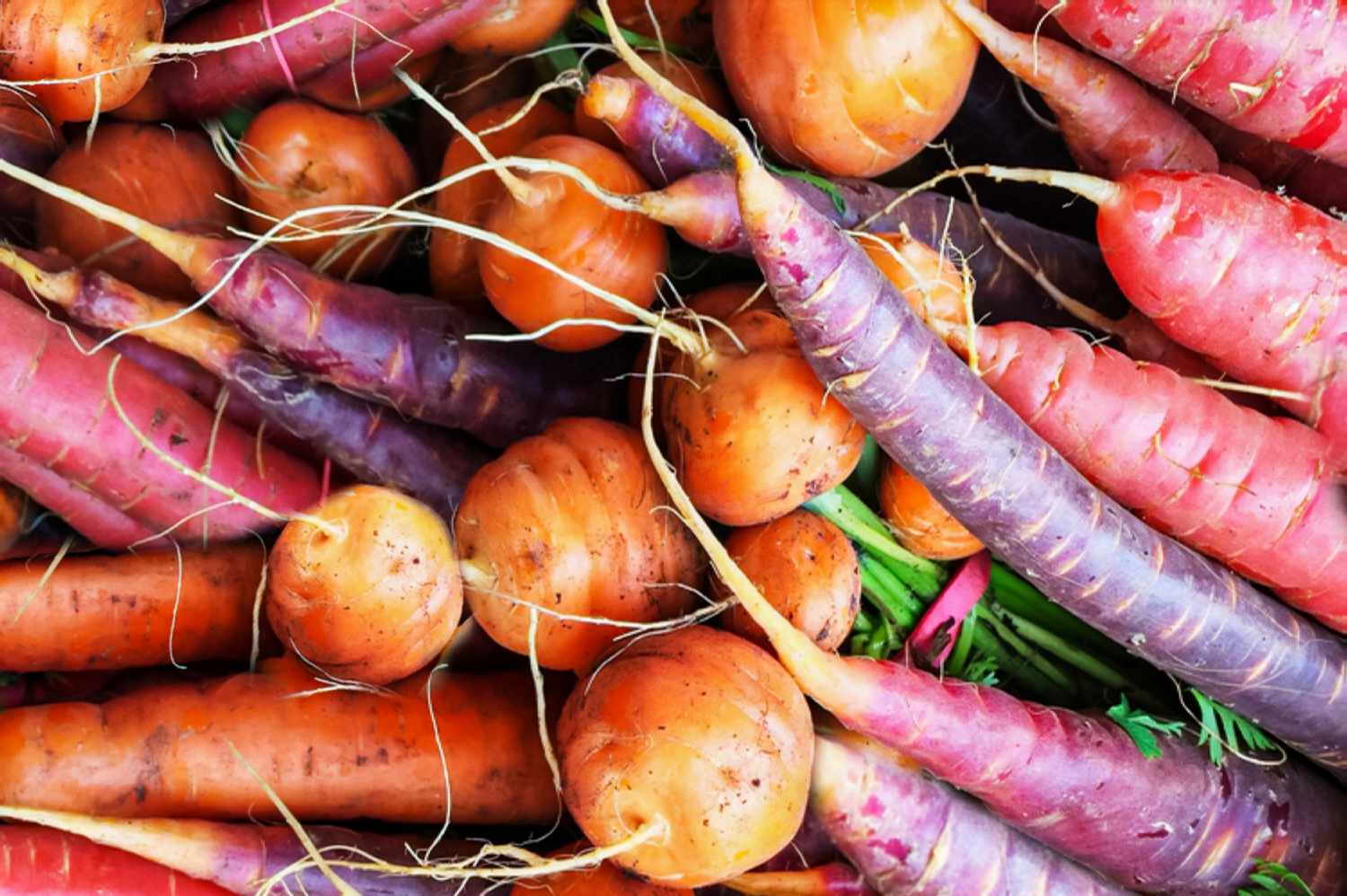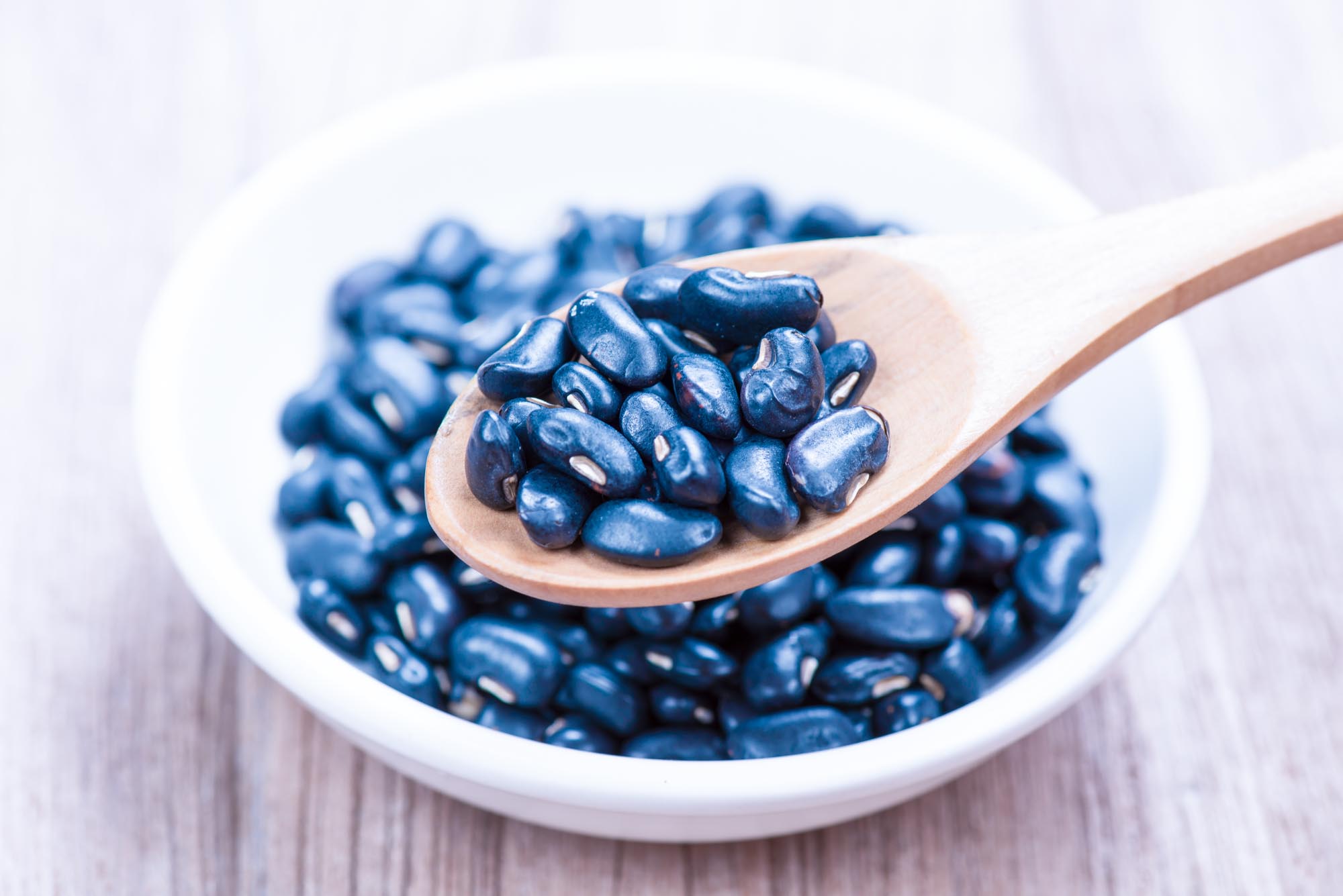Home>Types of Gardening>Edible Gardening>What Are Raw Vegetables
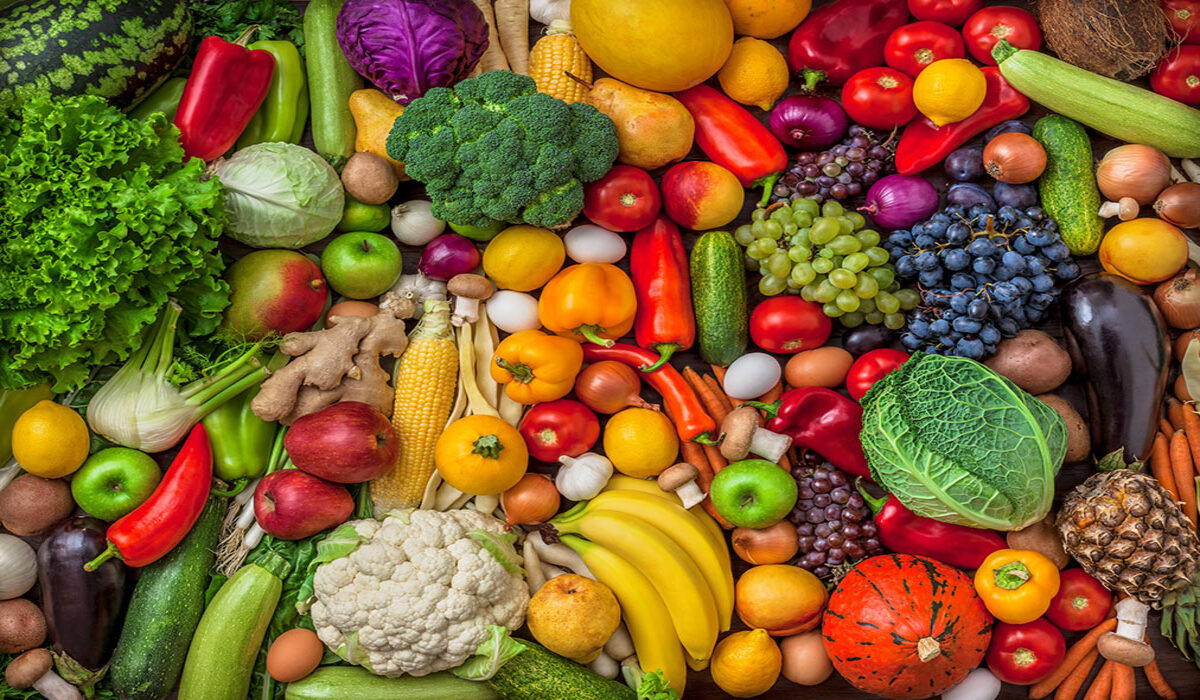

Edible Gardening
What Are Raw Vegetables
Modified: January 22, 2024
Learn about the benefits of eating raw vegetables and how to grow your own edible garden with our comprehensive guide on edible gardening.
(Many of the links in this article redirect to a specific reviewed product. Your purchase of these products through affiliate links helps to generate commission for Chicagolandgardening.com, at no extra cost. Learn more)
Table of Contents
Introduction
Raw vegetables are an integral part of a healthy and balanced diet. They are packed with essential nutrients, fiber, and antioxidants that can promote overall well-being and protect against various diseases. Whether you enjoy them as a crunchy snack, toss them in a salad, or incorporate them into your cooking, raw vegetables offer a plethora of health benefits.
In their uncooked state, vegetables retain maximum nutrients and enzymes, making them an excellent choice for those looking to optimize their nutrition intake. Raw vegetables are also low in calories and high in water content, which can aid in weight management and hydration.
Furthermore, consuming raw vegetables allows you to experience their natural flavors and textures, enhancing the culinary experience. From crisp lettuce leaves to juicy tomatoes and crunchy carrots, raw vegetables can add a vibrant and refreshing element to your meals.
In this article, we will explore the definition of raw vegetables, the numerous benefits they offer, the various types available, their nutritional value, and practical tips on how to incorporate them into your daily diet. We will also discuss some precautions and safety tips to consider when consuming raw vegetables.
So, join us on this edible gardening journey as we dive into the world of raw vegetables and discover the wonders they can bring to our plates and our health.
Definition of Raw Vegetables
Raw vegetables refer to fresh, uncooked vegetables that are consumed in their natural state, without undergoing any form of cooking or processing. They are typically harvested from gardens or farms and can be enjoyed raw, providing a range of textures, flavors, and nutritional benefits.
The term “raw vegetables” encompasses a wide variety of plant-based foods, including leafy greens, root vegetables, cruciferous vegetables, and more. Examples of commonly consumed raw vegetables include lettuce, spinach, cucumbers, carrots, bell peppers, broccoli, and tomatoes.
It is important to note that not all vegetables are suitable for consuming raw. Some vegetables, such as potatoes, require cooking to improve their digestibility and remove toxins. However, most vegetables can be enjoyed in their raw form, allowing you to fully experience their natural taste and maximize their nutritional value.
Raw vegetables can be eaten as standalone snacks, incorporated into salads, or used as ingredients in various dishes, such as wraps, sandwiches, and smoothies. They provide a refreshing and crunchy element to meals and can enhance the overall taste and texture of a dish.
When consuming raw vegetables, it is essential to ensure that they are fresh, properly washed, and free from any signs of spoilage. This helps reduce the risk of foodborne illnesses and ensures that you are getting the maximum nutritional benefits from your vegetables.
Overall, raw vegetables are a versatile and healthy addition to any diet. Their definition extends beyond just being uncooked; it encompasses the natural state of vegetables, providing a rich source of vitamins, minerals, antioxidants, and dietary fiber.
Benefits of Eating Raw Vegetables
Eating raw vegetables offers a multitude of benefits for your overall health and well-being. Let’s explore some of the key advantages:
- Rich in Nutrients: Raw vegetables are a powerhouse of essential nutrients, including vitamins, minerals, and antioxidants. These nutrients play a vital role in maintaining good health and supporting various bodily functions. For instance, leafy greens like kale and spinach are rich in vitamin K, while bell peppers are packed with vitamin C.
- Improved Digestion: Raw vegetables are an excellent source of dietary fiber, which aids in digestion and helps prevent constipation. Fiber also promotes the growth of beneficial gut bacteria, supporting a healthy digestive system.
- Hydration: Many raw vegetables, such as cucumbers and tomatoes, have a high water content, which contributes to your hydration levels. Staying hydrated is essential for maintaining optimal bodily functions and overall health.
- Weight Management: Raw vegetables are low in calories and high in fiber, which can help you feel fuller for longer. By incorporating more raw vegetables into your diet, you can support your weight management goals and promote a healthier lifestyle.
- Improved Cardiovascular Health: The antioxidants found in raw vegetables, such as lycopene in tomatoes and beta-carotene in carrots, have been linked to a reduced risk of cardiovascular diseases. They help protect against oxidative stress and inflammation, which are key factors in heart-related conditions.
- Enhanced Skin Health: The vitamins and antioxidants present in raw vegetables can contribute to healthier and more radiant skin. They help combat free radicals, promote collagen production, and keep your skin hydrated and nourished from within.
- Boosted Immune System: Raw vegetables contain a range of immune-boosting vitamins and minerals, such as vitamin C and zinc. These nutrients help strengthen your immune system, reducing the risk of infections and supporting overall immune function.
- Increased Energy Levels: The natural sugars and carbohydrates found in raw vegetables can provide a sustainable source of energy throughout the day. They are a healthier alternative to processed snacks and sugary treats.
By incorporating a variety of raw vegetables into your diet, you can reap these benefits and support your overall health and well-being. However, it is important to note that individual nutritional needs may vary, so it is advisable to consult with a healthcare professional or registered dietitian for personalized dietary advice.
Types of Raw Vegetables
The world of raw vegetables is vast and diverse, offering a wide range of flavors, textures, and nutritional profiles. Here are some popular types of raw vegetables:
- Leafy Greens: Leafy greens are a staple in any raw vegetable diet. They include spinach, kale, lettuce, arugula, and Swiss chard. Leafy greens are rich in vitamins A, C, and K, as well as folic acid and iron. They add a refreshing crunch and vibrant color to salads and wraps.
- Cruciferous Vegetables: Cruciferous vegetables belong to the Brassicaceae family and include broccoli, cauliflower, Brussels sprouts, and cabbage. These vegetables are packed with fiber, vitamins, and minerals. They are known for their distinct flavors and can be enjoyed raw in salads or as crunchy snacks.
- Root Vegetables: Root vegetables like carrots, beetroots, radishes, and turnips can be enjoyed raw. They provide a satisfying crunch and are rich in nutrients such as vitamin A, potassium, and antioxidants. Raw root vegetables can be sliced, grated, or used as dippers for healthy dips.
- Sweet and Juicy Vegetables: Vegetables like tomatoes, cucumbers, bell peppers, and zucchini are delicious and refreshing when eaten raw. They are hydrating, low in calories, and rich in vitamins and antioxidants. These vegetables can be sliced or chopped and added to salads, sandwiches, or enjoyed on their own as healthy snacks.
- Herbs: While not technically vegetables, herbs like cilantro, parsley, basil, and mint make excellent additions to raw dishes. They add a burst of fresh flavor and offer their unique health benefits. Fresh herbs can be sprinkled over salads or blended into dressings and dips.
- Allium Vegetables: Allium vegetables, including onions, garlic, and shallots, can also be enjoyed raw. Though they have a distinct and pungent flavor, they offer various health benefits, including immune-boosting properties and potential cardiovascular benefits. Raw allium vegetables can add a punch of flavor to salads or be used as toppings for sandwiches and wraps.
These are just a few examples of the many types of raw vegetables available. Exploring different varieties can add variety to your diet and ensure you get a wide array of nutrients.
When selecting raw vegetables, opt for those that are fresh, firm, and free from blemishes. Store them properly to maintain their freshness and nutritional value. Remember to wash all raw vegetables thoroughly before consumption to remove any dirt or potential contaminants.
Nutritional Value of Raw Vegetables
Raw vegetables are not only delicious but also highly nutritious. They are packed with essential vitamins, minerals, and antioxidants that support overall health and well-being. Here are some of the key nutrients found in raw vegetables:
- Vitamin A: Many raw vegetables, especially those with vibrant colors like carrots, sweet potatoes, and leafy greens, are rich in beta-carotene, a precursor to vitamin A. Vitamin A is important for healthy vision, immune function, and cell growth.
- Vitamin C: Raw vegetables like bell peppers, broccoli, and cauliflower are excellent sources of vitamin C. This powerful antioxidant helps boost the immune system, supports collagen production, and aids in wound healing.
- Vitamin K: Leafy greens such as spinach and kale are high in vitamin K, which plays a crucial role in blood clotting and bone health.
- Folate: Raw vegetables like broccoli, spinach, and asparagus are rich in folate, or vitamin B9. Folate is essential for cell growth and development, making it particularly important for pregnant women.
- Potassium: Many raw vegetables, including tomatoes, cucumbers, and leafy greens, are good sources of potassium. This mineral plays a vital role in maintaining proper heart and muscle function, as well as supporting healthy blood pressure.
- Dietary Fiber: Raw vegetables are an excellent source of dietary fiber, which aids in digestion, helps regulate blood sugar levels, and promotes feelings of fullness. Fiber also supports a healthy gut microbiome and can contribute to weight management.
- Antioxidants: Raw vegetables are packed with antioxidants, such as lycopene in tomatoes and sulforaphane in broccoli. These compounds help combat oxidative stress and protect against chronic diseases.
It’s important to note that the nutrient composition of raw vegetables can vary depending on the type of vegetable, its freshness, and the growing conditions. Including a variety of raw vegetables in your diet ensures that you obtain a wide range of nutrients to support optimal health.
Remember that while raw vegetables offer many benefits, they may not be suitable for everyone. Some people may find certain raw vegetables difficult to digest or may require cooked vegetables to meet their dietary needs. It’s always a good idea to listen to your body and make adjustments accordingly.
How to Incorporate Raw Vegetables into Your Diet
Incorporating raw vegetables into your diet doesn’t have to be a daunting task. Here are some practical tips to help you enjoy the benefits of raw vegetables:
- Salads: The easiest and most common way to include raw vegetables in your diet is by making salads. Chop up a variety of vegetables like lettuce, cucumbers, tomatoes, carrots, and bell peppers, and toss them together with your favorite dressing. Add protein sources like grilled chicken or chickpeas to make it a more filling meal.
- Veggie Wraps and Rolls: Turn raw vegetables into a delicious and nutritious wrap. Fill a whole-grain tortilla or lettuce leaves with a mix of raw vegetables, such as spinach, shredded carrots, sliced cucumbers, and avocado. Add some hummus or a light dressing for extra flavor.
- Snack on Raw Vegetables: Keep a bowl of washed and cut raw vegetables in the fridge for easy snacking. Carrot sticks, cherry tomatoes, celery, and bell pepper slices make nutritious and convenient snacks that you can enjoy throughout the day.
- Smoothies: Sneak raw vegetables like spinach, kale, or cucumber into your morning smoothie. Blend them with fruits like bananas, berries, or mangoes for a refreshing and nutrient-packed drink.
- Garnish or Toppings: Use chopped raw vegetables as garnish or toppings for various dishes. Sprinkle some diced tomatoes, cucumbers, and onions on top of soups, stews, or chili for added freshness and crunch.
- Dips and Spreads: Make use of raw vegetables as dipping tools. Pair carrot sticks, celery, or bell pepper slices with hummus, guacamole, or Greek yogurt-based dips for a healthy and satisfying snack.
- Spiralized Vegetables: Invest in a spiralizer and turn raw vegetables like zucchini, carrots, or beets into noodle-like strands. Use these vegetable “noodles” as a base for salads, stir-fries, or even as a substitute for pasta in your favorite recipes.
- Raw Vegetable Sides or Salsa: Create simple side dishes or salsas with raw vegetables. Combine diced tomatoes, onions, jalapenos, and cilantro for a refreshing tomato salsa. Alternatively, mix cucumber, red onion, and cherry tomatoes for a quick and easy cucumber salad.
Remember, the key to incorporating raw vegetables into your diet is to be creative and experiment with different flavors and textures. Try new combinations that excite your taste buds and keep you motivated to enjoy a variety of raw vegetables regularly.
Lastly, when preparing raw vegetables, it’s important to wash them thoroughly under running water to remove any dirt, pesticides, or contaminants. Proper preparation ensures that you can enjoy the benefits of raw vegetables in a safe and healthy way.
Precautions and Safety Tips for Eating Raw Vegetables
While incorporating raw vegetables into your diet offers numerous health benefits, it’s important to follow some precautions and safety tips to ensure their consumption is safe and enjoyable. Here are some guidelines to keep in mind:
- Wash Thoroughly: Before consuming raw vegetables, it’s crucial to wash them thoroughly under running water to remove any dirt, bacteria, or pesticide residues. Use a vegetable brush if necessary, especially for vegetables with rougher surfaces like carrots or potatoes.
- Proper Storage: Store raw vegetables in the refrigerator at the recommended temperatures to maintain their freshness and nutritional value. Avoid leaving them at room temperature for too long, as this can promote bacterial growth and spoilage.
- Choose Fresh Vegetables: Select fresh vegetables that are firm, vibrant in color, and free from any signs of spoilage. Avoid using vegetables that appear wilted, moldy, or slimy, as these can indicate bacterial contamination.
- Avoid Cross-Contamination: Prevent cross-contamination by keeping raw vegetables separate from raw meat, poultry, or seafood. Use separate cutting boards, knives, and utensils to avoid any potential transfer of bacteria.
- Consider Organic Options: If possible, choose organic raw vegetables to minimize exposure to pesticides and chemicals. Organic vegetables are grown without synthetic fertilizers and pesticides, reducing potential health risks associated with pesticide residues.
- Diversify Your Vegetable Choices: Eating a diverse range of raw vegetables ensures you receive a wide array of nutrients. Rotate your vegetable choices regularly to prevent overexposure to any particular pesticide residues that may be present.
- Know Your Food Allergies and Sensitivities: Be aware of any food allergies or sensitivities you may have. Some raw vegetables, such as celery or certain cruciferous vegetables, can cause allergic reactions or digestive issues in some individuals.
- Practice Portion Control: While raw vegetables are healthy, it’s important to practice portion control to maintain a balanced diet. Overeating raw vegetables, especially those high in fiber, can lead to bloating, gas, or digestive discomfort.
- Experiment with Cooking: Not all vegetables are suitable for consuming raw. Some vegetables, like potatoes or certain root vegetables, require cooking to make them safe to eat and improve their digestibility. Experiment with various cooking methods to add variety to your vegetable consumption.
By following these precautions and safety tips, you can enjoy the nutritional benefits of raw vegetables while minimizing any potential risks associated with their consumption. If you have any concerns or specific health conditions, it’s always a good idea to consult with a healthcare professional or registered dietitian for personalized advice.
Conclusion
Raw vegetables are not only delicious but also incredibly beneficial for our overall health. They provide a wealth of essential nutrients, vitamins, minerals, and antioxidants that support various bodily functions and help prevent chronic diseases.
From leafy greens to crunchy root vegetables and hydrating cucumbers, raw vegetables offer a rich assortment of flavors, textures, and colors. They can be enjoyed as standalone snacks, incorporated into salads, used as toppings or garnishes, and even transformed into healthy smoothies.
By incorporating raw vegetables into our diets, we can reap numerous benefits such as improved digestion, increased nutrient intake, enhanced immune function, and better cardiovascular health. The fiber content in raw vegetables also aids in weight management and promotes feelings of fullness.
However, it’s important to take precautions when consuming raw vegetables. Properly washing them, selecting fresh produce, avoiding cross-contamination, and being aware of any food allergies or sensitivities are essential steps to ensure safe consumption.
Remember, everyone’s nutritional needs can vary, and certain individuals may find it easier to digest and enjoy cooked vegetables. It’s essential to listen to your body and make adjustments accordingly.
So, embrace the vibrant world of raw vegetables and let them be a cornerstone of your healthy and balanced diet. Explore different types, experiment with various recipes, and make them a flavorful and exciting part of your daily meals. Whether you’re a seasoned health enthusiast or just starting on your wellness journey, raw vegetables can be a delicious and nourishing addition to your culinary repertoire.

